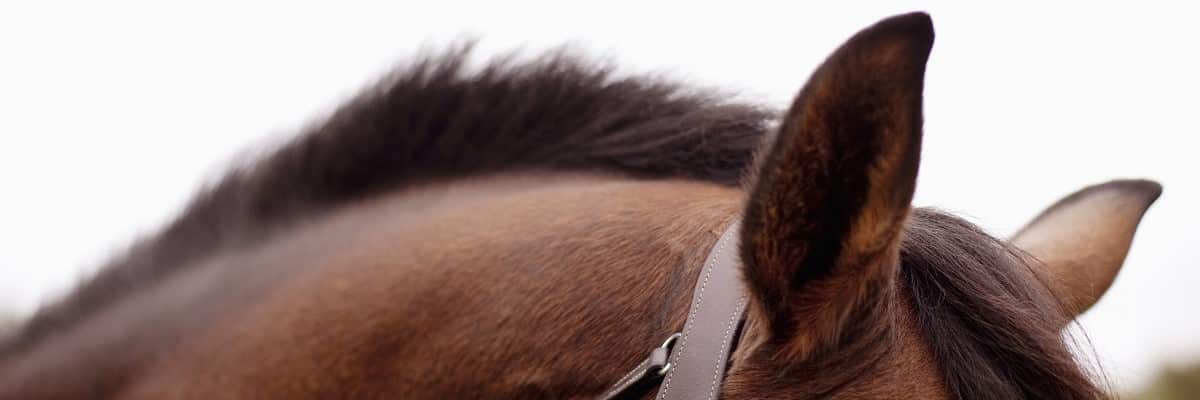If you have horses as pets and are keen on getting the right answer to how you treat aural plaque in horses, you are in the right place. Many horse pet owners often find their favourite animals suffering from the various problems associated with aural plaque. In this article, we will have a look at the multiple aspects of aural plaque.
We will look at the basic meaning and definition of aural plaque. We will also find out a few more possible questions that might arise regarding aural plaque as far as horses are concerned. We are confident that the answers shared over the next few lines for various doubts raised by the readers and other stakeholders could be useful in many ways.
What is Aural Plaque In Horses?
Aural plaque is also referred to as aural papilloma. It is basically a health condition that impacts the insides of a horse’s ear. It happens when a plaque-like and white material forms over the inside of the horse’s ear. The white coating, at times, could be crusty and thick. However, in most cases, you also have horses with tender skin pink in colour, and it is located underneath the plaque.
In most cases, it is a benign condition, and there are not many reasons to suggest that it could bother the horse too much. In most cases, it could be considered a cosmetic issue. However, there could be instances where the horses may develop ear sensitivity. Once a horse is infected with aural plaque, it may not be possible to permanently eliminate the problem. However, there are many ways and means by which it can be managed quite effectively.
Like all diseases, some symptoms are associated with an aural plaque as far as horses are concerned. As mentioned above, the most common symptom is crusty and white plaque that is mostly rough and raised. You also may come across pink skin underneath lesions and other such symptoms. If the horse has started becoming sensitive to the lesions, it may result in its head shaking. Further, it could show signs of head shyness, and you may, as a master, have difficulties putting a bridle or halter on the horse.
Does Aural Plaques On Horses Go Away?
It would be pertinent to mention here that aural plaque is a form of papillomaviruses. They tend to remain dormant in the body, and therefore they may never ever leave the body. Hence, if you see that your horse develops symptoms and signs of aural plaque, you may have to be prepared that it will keep coming back over and over again. You also could have a major problem with black flies that bite the inside of the horse’s ears. You must try to find ways to stop this from happening if you feel that the problems and symptoms associated with aural plaque are becoming worse.

Is aural plaques contagious?
Yes, since this is a form of infectious disease, it is quite likely that it will be highly contagious. Hence, as the dog owner, the onus lies in you to take steps to overcome this problem. You must keep the infected horse away from other horses. Further, as mentioned above, you must try your best to keep black flies and ticks away from the infected horse. This is important and vital because of some obvious reasons.
The ticks and flies move around from the host and start affecting other healthy horses. Therefore, if it is not controlled, it could lead to various other problems and could impact many horses with aural plaque over some time or at the same time. Hence, it is obvious that aural plaque is extremely contagious for horses, and you must not shy away from the various steps you should take to overcome this problem.
How do you treat aural plaque in horses?
Like most papillomavirus, there may not be a complete and total cure for horses suffering from aural plaque. So far, there has not been any definitive treatment for this disease that impacts many horses across the country and across the world. However, we need to bear in mind that aural plaque, in most cases, is a cosmetic issue.
As long as the diseases and their symptoms do not bother the horse, it would be advisable to stay away from treatment. However, in cases, as mentioned earlier, the horse may start developing sensitive ears and exhibit some symptoms. Some reasonably effective treatment methods are being tried. The plaque is often removed, and the pink skin is displayed. This part of the pink skin is treated with a healing and pink ointment.
This treatment could be effective because of some obvious reasons. It could reduce the size of the affected area and help reduce pain and discomfort as far as the horse is concerned. There are some interesting stories to tell if you look at some anecdotal approaches to overcome this problem in horses. There is a class of immunomodulatory drugs. The drug is referred to as Aldara. It is often applied by veterinary doctors or even the owners of the dog. It comes in the form of a cream and is applied to the affected ears. It has some mixed reactions, but many people seemingly have found that it may have helped reduce the level of discomfort as far as the horse is concerned.
If you have more advanced, disturbing and painful cases of aural plaque, you could try fixing a pair of ear covers and have them put up on the outside of the ear. This could help a lot because it could prevent the stinging pain caused by black flies and ticks’ bites. Regular attacks of black flies could lead to a worsening of the pain and also could aggravate the various symptoms associated with aural plaque.
Can I prevent aural plaque in the future?
As mentioned above, a total and complete cure for aural plaque in horses may not be possible. However, once the problem has been identified in the early stages, it would be good to start some proactive treatments instead of being reactive about it. First, clean habits and regular cleaning and washing of the ears of the horse could prevent aural plaque. It will also help the owners carefully watch for any changes in the skin structures in the ear and take proactive action rather than reactive.
Keeping a check on ticks and parasites could also help in overcoming the problem in many cases. These are the main carriers of aural plaque, and if you can manage the numbers effectively, it could be a great way forward. However, we need to bear in mind that this is not so easy, and therefore you also should know how to manage the horse with aural plaque rather than looking for a complete cure.
As mentioned a few times above, we need to bear in mind that this is a form of papillomavirus, and therefore there is no complete cure for it. Consequently, it would be better to go in to be preventive about it rather than being reactive about it.
Once a horse has been affected by aural plaque, be mentally prepared that it will keep coming back. The frequency may vary, but it will certainly keep coming back every now and then. However, as mentioned many times earlier, the infection is extremely mild and mostly cosmetic in nature in most cases.
It may not cause major problems as far as managing the symptoms are concerned. But it would always be better to stay away from the negative issues associated with ticks and black flies. They are highly irritating, and their bites could cause quite a bit of discomfort to the horses. Otherwise, in a majority of the cases, you have nothing much to worry about.

When to see a vet about aural plaques on your horse?
If you ask most veterinarians, they would rather advise that the problem of aural plaque be left alone. This is because repeated handling of the affected area of the ear could lead to avoidable inflammation and could also lead to sensitivity and irritation of the site. The horse may start shaking its head violently.
There could be some ointments that are considered to be effective for treating this problem. Many of these ointments contain steroids and various other anti-inflammatory agents. Before you take the horse to the veterinarians, please keep a few things in mind. There is no harm in trying out the ointments prescribed by the vets. However, these ointments are extremely painful and uncomfortable on the horses and should always be kept in mind.
However, if you find that the symptoms and conditions associated with aural plaque are not improving, it would be better to take the horse to a vet. This is basically to ensure that there are no other serious complications like sarcoma and other grave diseases.
Conclusion
It is quite clear from the article that aural plaque is a common disease amongst horses. It impacts almost 22% of the horses, and therefore it is one of the most prevalent health challenges for horse owners. In most cases, the disease is easily manageable through a full and complete cure that looks out of the horizon as of now.


